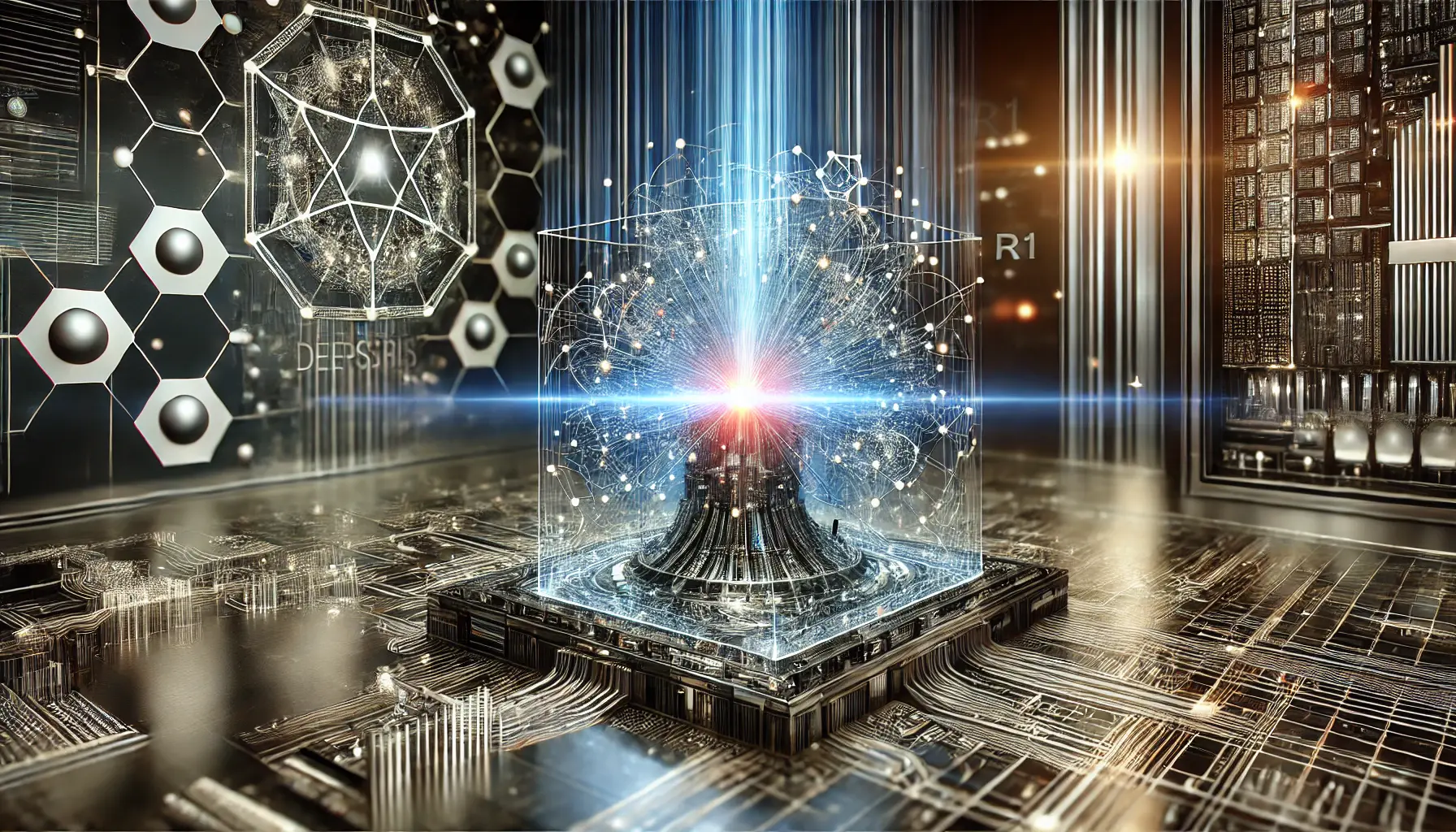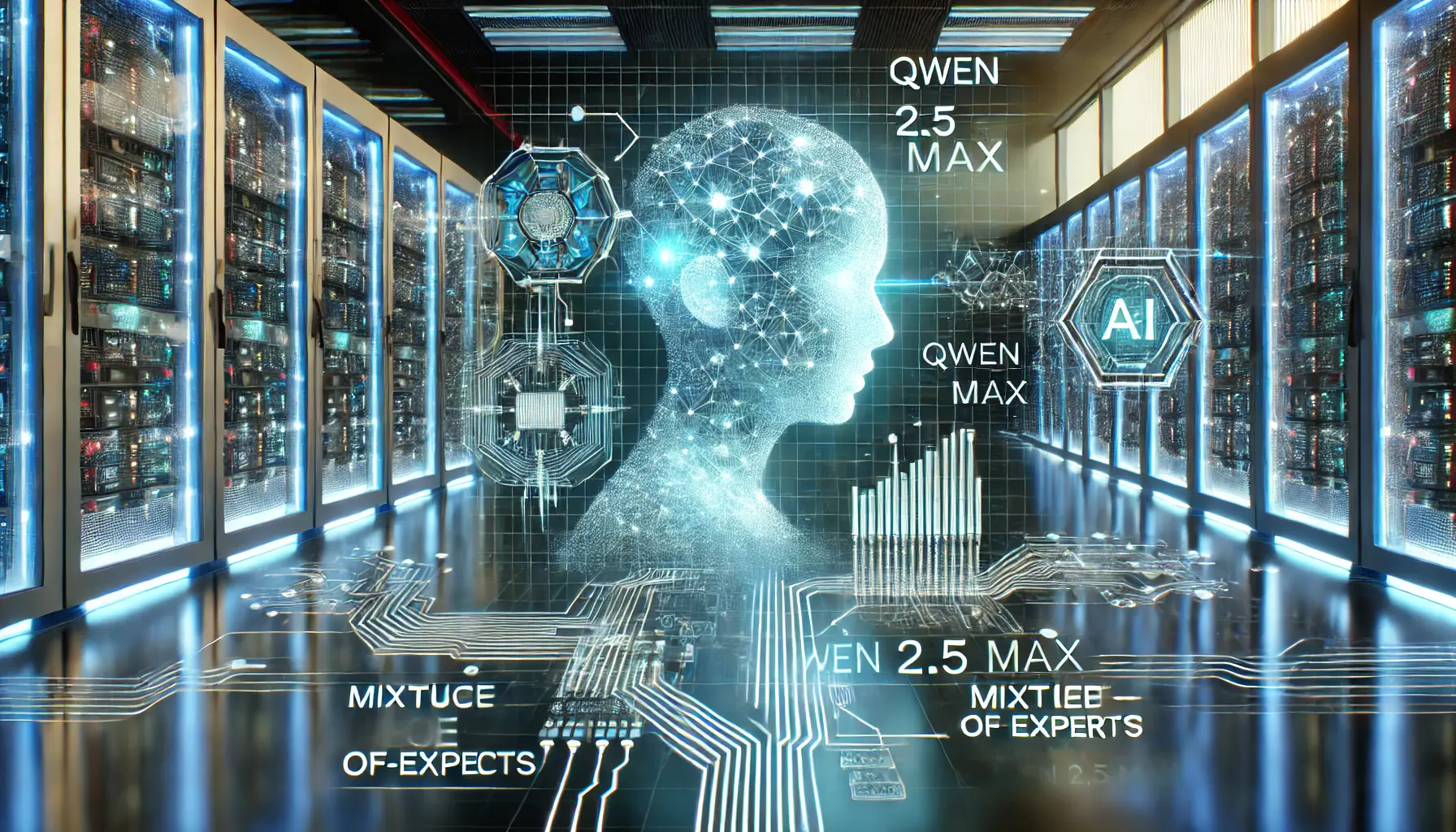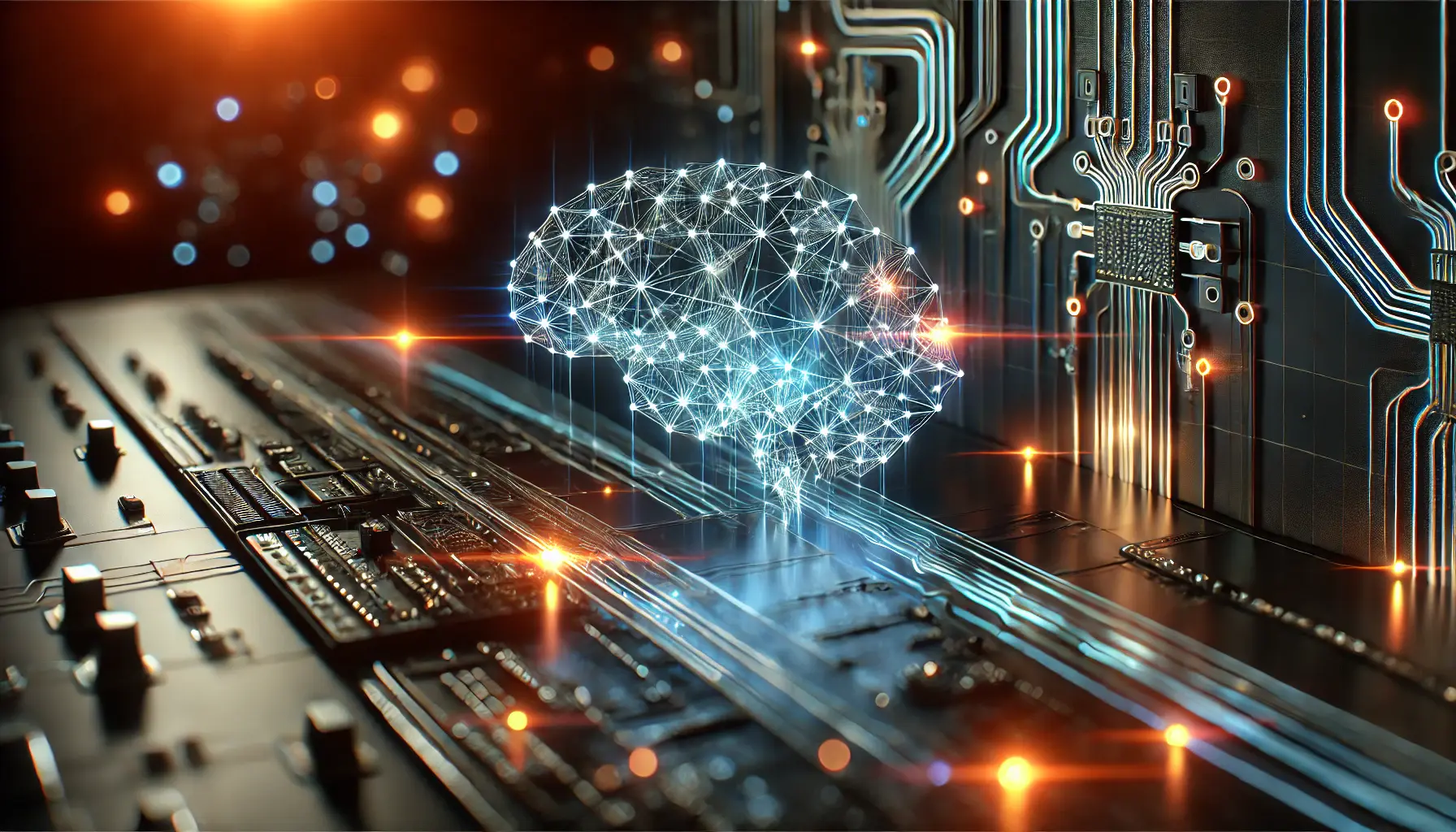Have you ever wondered what makes DeepSeek v3 stand out in the rapidly evolving world of artificial intelligence?
It’s not just another AI model; it’s a groundbreaking advancement that has captured the attention of experts and enthusiasts alike.
In this article, we’ll delve into the technical architecture of DeepSeek v3, exploring the innovative components that contribute to its remarkable performance and efficiency.
- Introduction to DeepSeek v3’s Architecture
- Core Components of DeepSeek v3
- Training Methodologies in DeepSeek v3
- Efficiency and Performance Optimization in DeepSeek v3
- Comparative Analysis and Future Directions of DeepSeek v3
- Final Thoughts on the Technical Architecture of DeepSeek v3
- DeepSeek v3: Frequently Asked Questions
Introduction to DeepSeek v3’s Architecture
DeepSeek v3 represents a quantum leap in AI development by improving strong points from previous versions and introducing novel architectural advancements.
This version is powered by a state-of-the-art Mixture-of-ExpertsA machine learning technique that divides a neural network into specialized sub-networks, activating only a subset for each task. (MoE) framework, which enhances the model’s multitasking capabilities by partitioning its extensive neural network into specialized fractions.
This architecture allows the model to self-regulate, dynamically allocating and reallocating computational resources to optimize performance across various applications.

A visual representation of DeepSeek v3’s Multi-head Latent Attention (MLA) mechanism, illustrating parallel data processing through an intricate neural network.
Multi-head Latent Attention (MLA) Mechanism
One of the standout features of DeepSeek v3 is its Multi-head Latent Attention (MLA) mechanism.
This innovative component streamlines the attention process, reducing computational overhead without compromising accuracy.
By implementing MLA, DeepSeek v3 achieves faster inferenceThe process of using a trained AI model to generate predictions or outputs from new input data. times, making it both responsive and efficient in real-world scenarios.

A high-tech depiction of DeepSeek v3’s Auxiliary-Loss-Free Load Balancing Strategy, illustrating seamless computational resource allocation.
Auxiliary-Loss-Free Load Balancing Strategy
Compared to previous versions, DeepSeek v3 introduces a new auxiliary-loss-free load balancing strategy.
This enhancement ensures that computational resources are utilized efficiently, preventing bottlenecks and improving model scalability.
Such innovations highlight DeepSeek v3’s commitment to pushing the boundaries of AI technology, delivering powerful yet efficient solutions.
Understanding how these components work together reveals why DeepSeek v3 is not only an advanced AI model but also a practical tool for a wide range of applications.
Whether you’re an AI researcher, a technology enthusiast, or someone curious about the future of artificial intelligence, exploring the architecture of DeepSeek v3 provides valuable insight into the next generation of AI innovation.
DeepSeek v3 introduces a state-of-the-art Mixture-of-Experts (MoE) framework, enhancing multitasking and computational efficiency.
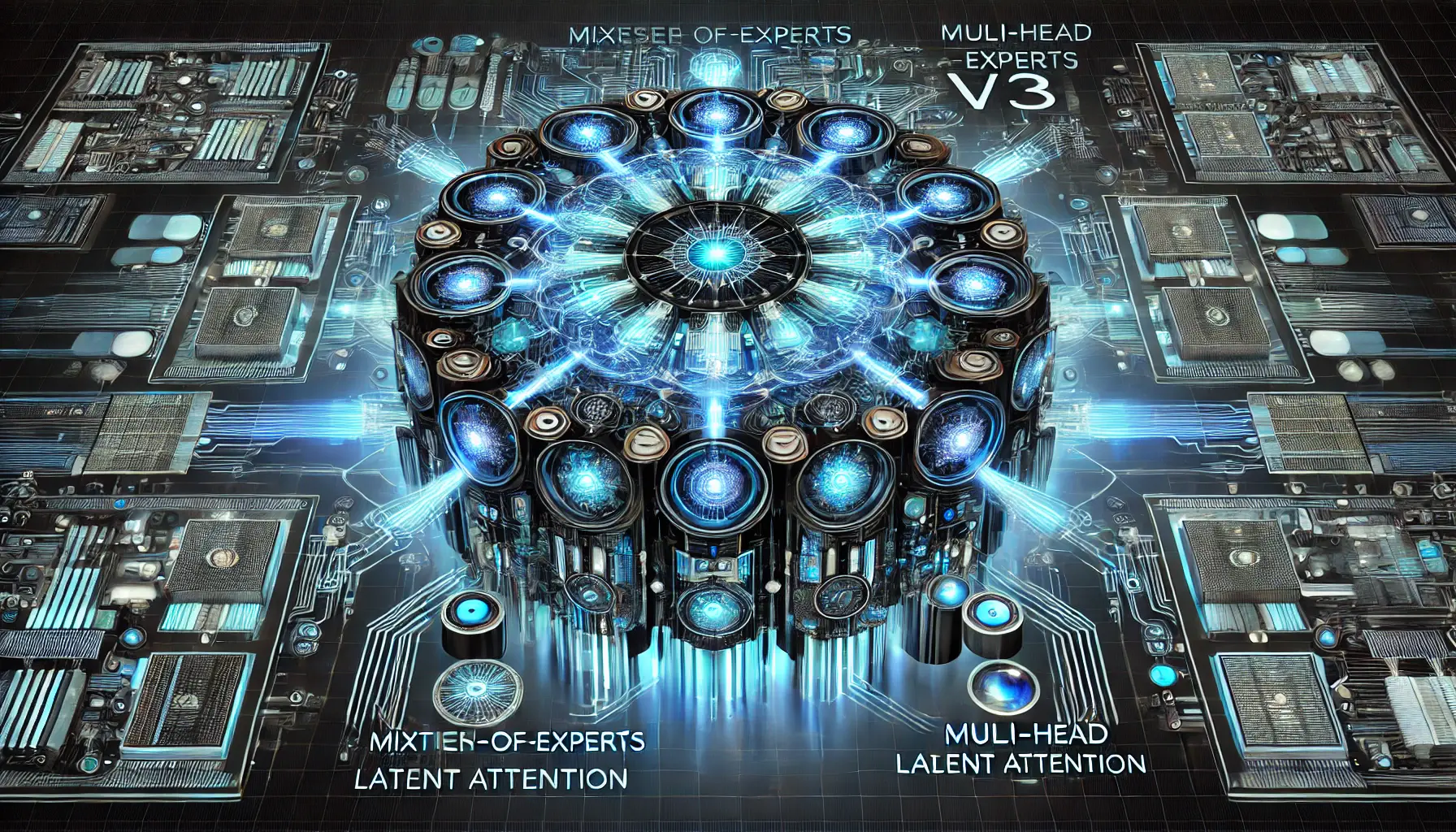
A high-tech depiction of DeepSeek v3’s core components, illustrating its modular AI architecture and seamless data processing.
Core Components of DeepSeek v3
Delving deeper into the architecture of DeepSeek v3, it’s essential to understand its core components that collectively contribute to its advanced capabilities and efficiency.

A visualization of DeepSeek v3’s Mixture-of-Experts (MoE) framework, illustrating dynamic activation and efficient resource allocation across multiple sub-networks.
Mixture-of-Experts (MoE) Framework
At the heart of DeepSeek v3 lies the Mixture-of-Experts (MoE) paradigm.
In this innovative framework, the large neural network is divided into specialized sub-networks called ‘experts.’ For each given input, only a subset of these experts is activated, allowing for dynamic computation allocation.
This strategy significantly enhances multitasking while maintaining processing efficiency across diverse applications.

A representation of DeepSeek v3’s Multi-Head Latent Attention (MLA) mechanism, illustrating the efficient processing of compressed latent vectors in parallel attention heads.
Multi-Head Latent Attention (MLA) Mechanism
Another important module in DeepSeek v3 is the Multi-Head Latent Attention (MLA) mechanism.
This mechanism refines the attention process by introducing compressed latent vectors, which help reduce memory usage during inference without sacrificing performance.
By optimizing the attention structure, MLA enables faster processing and greater scalability, making DeepSeek v3 more responsive in real-world scenarios.
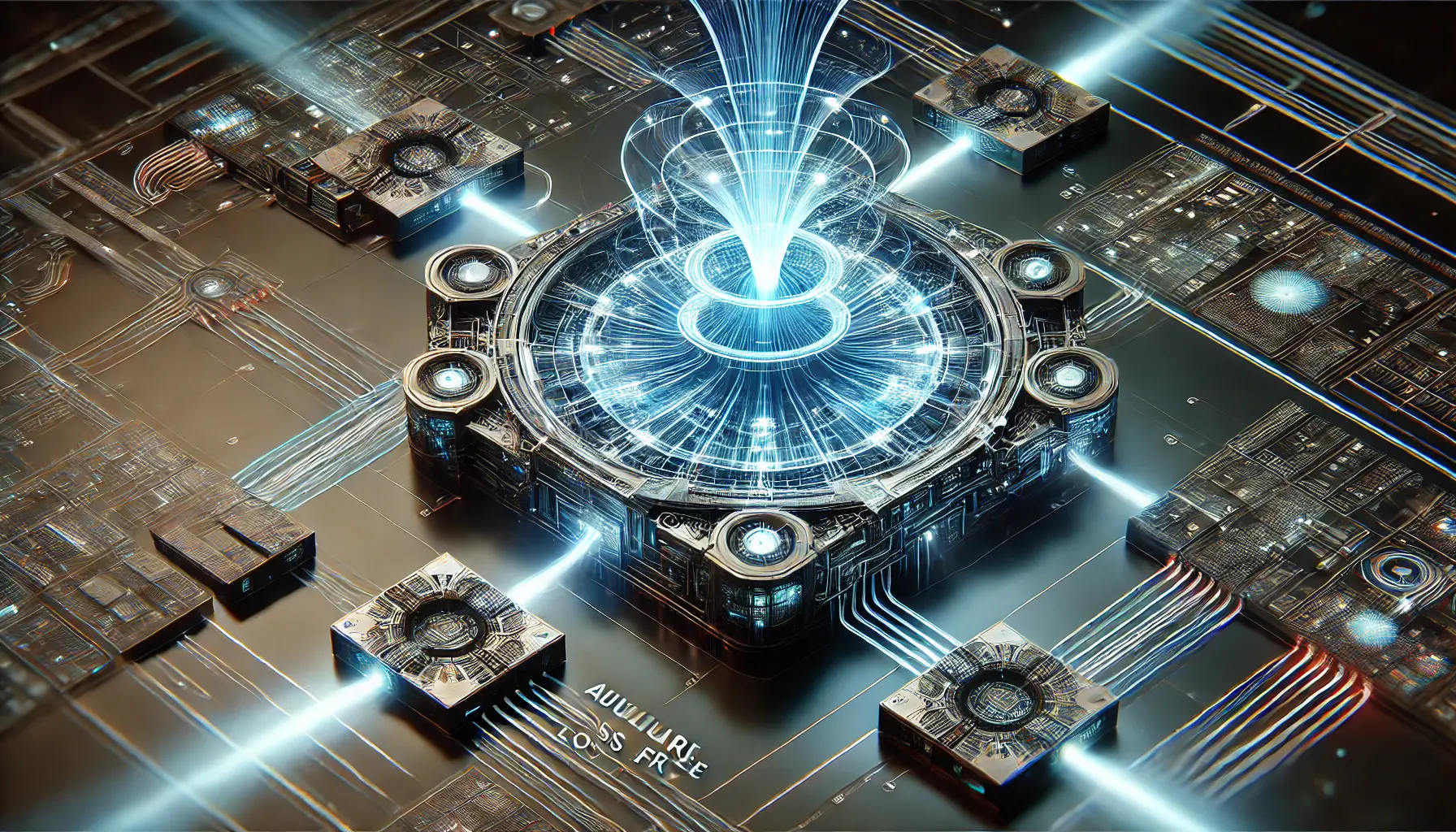
A representation of DeepSeek v3’s Auxiliary-Loss-Free Load Balancing Strategy, illustrating the real-time optimization and efficient distribution of computational resources.
Auxiliary-Loss-Free Load Balancing Strategy
To maximize computational efficiency, DeepSeek v3 employs an auxiliary-loss-free load balancing strategy.
Unlike traditional methods that use auxiliary loss functions to distribute workloads among experts, this approach achieves balanced expert utilization through dynamic bias adjustmentsModifications made to an AI model to prevent skewed predictions and ensure balanced computational distribution..
This prevents computational bottlenecks and enhances the model’s scalability, ensuring seamless execution across various tasks.
Taken together, these core components—the MoE framework, MLA mechanism, and auxiliary-loss-free load balancing—combine to provide DeepSeek v3 with extraordinary performance and efficiency.
Understanding these elements offers deeper insights into the model’s design and its wide-ranging applications across multiple domains.
The Mixture-of-Experts (MoE) framework dynamically allocates computational resources, significantly improving performance across various applications.
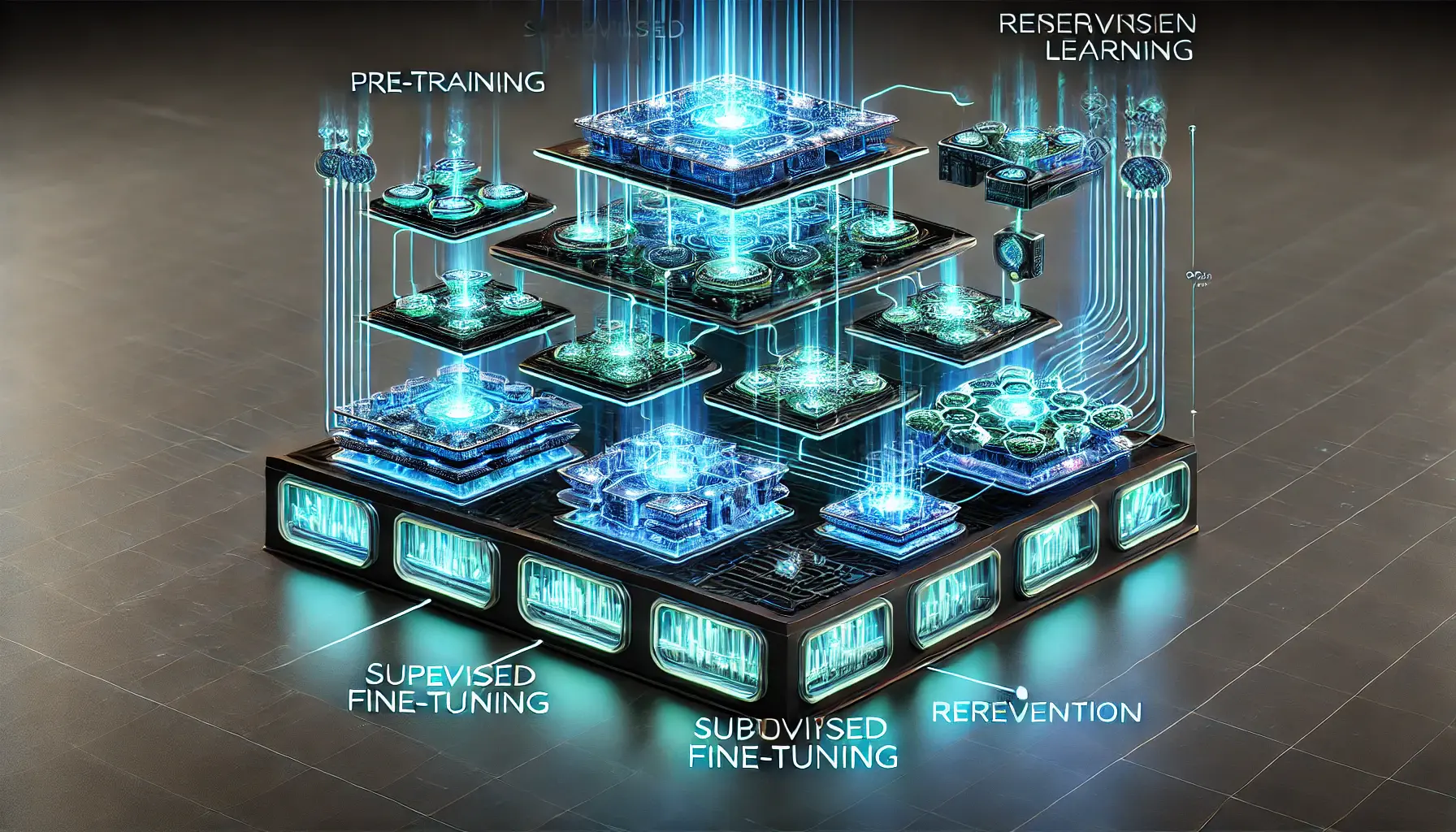
A visual representation of the training process in DeepSeek v3, illustrating the stages of pre-training, fine-tuning, and reinforcement learning through dynamic energy flows.
Training Methodologies in DeepSeek v3
Understanding the training methodologies of DeepSeek v3 provides insight into how this advanced AI model achieves its remarkable performance and efficiency.
The development process encompasses several key stages, each meticulously designed to enhance the model’s capabilities.
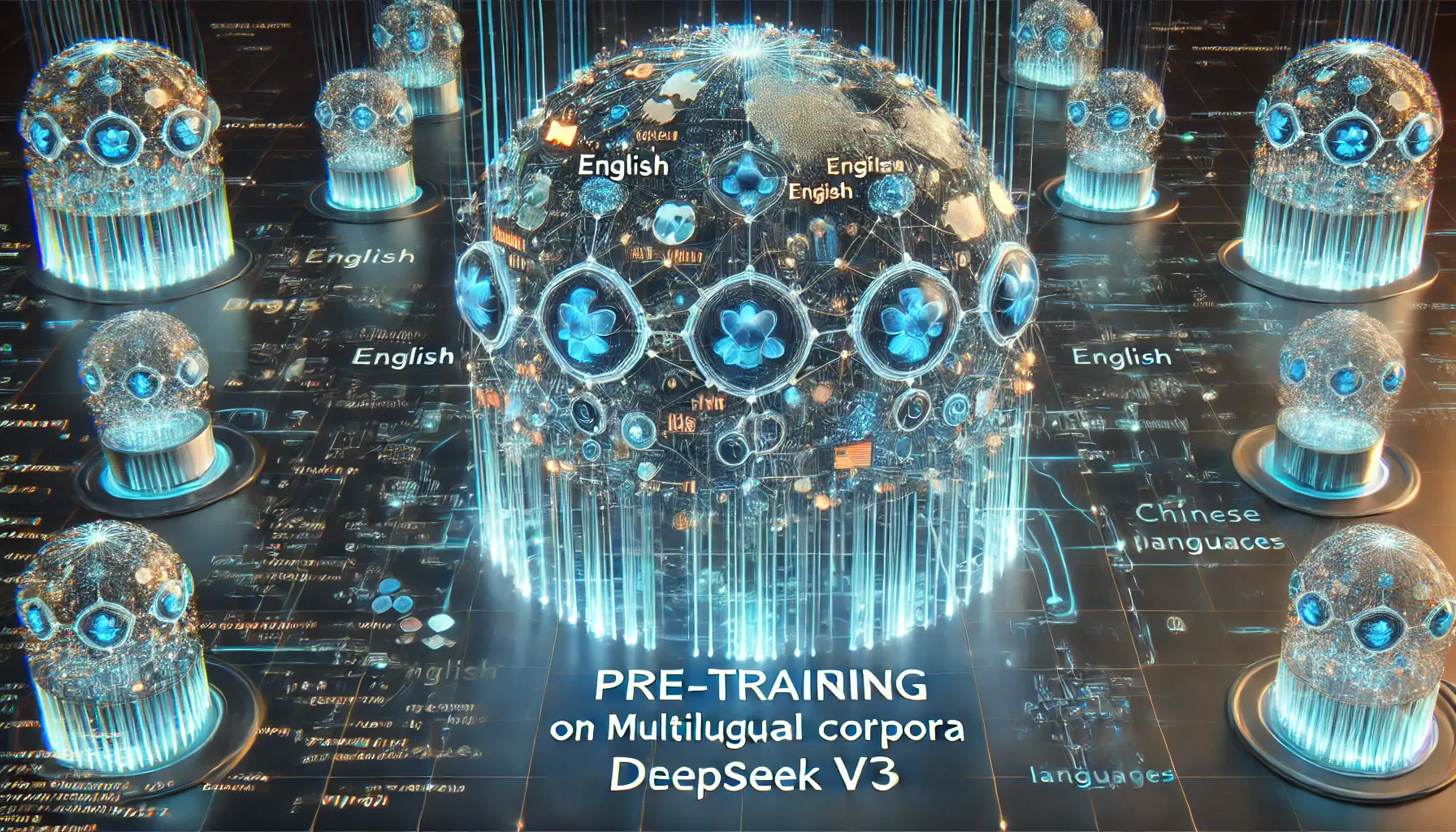
A representation of the pre-training process for DeepSeek v3, illustrating the absorption of multiple language data streams into a connected neural network.
Pre-Training on Multilingual Corpora
DeepSeek v3 was initiated with extensive pre-training on a diverse multilingual corpus.
Approximately 14.8 trillion high-quality tokens were used for training, primarily sourced from English, Chinese, and programming languages.
This vast dataset ensures broad exposure to multiple languages and technical domains, allowing the model to excel in various applications.
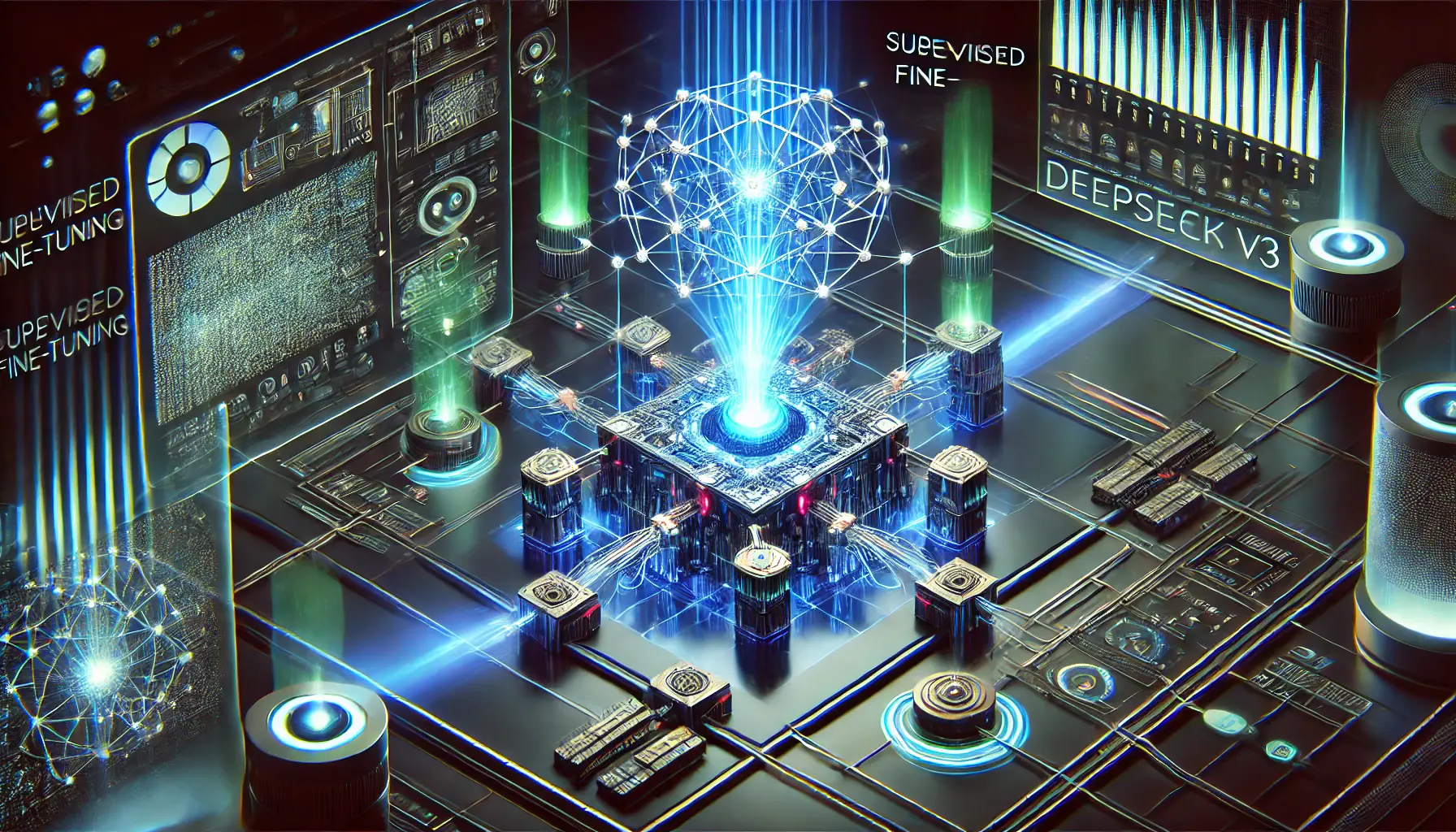
A representation of the Supervised Fine-Tuning (SFT) process in DeepSeek v3, with a neural network being dynamically refined through human-guided adjustments.
Supervised Fine-Tuning (SFT)
Following pre-training, DeepSeek v3 undergoes Supervised Fine-TuningA training process where a model is adjusted using labeled data to align outputs with human expectations. (SFT), aligning its output with human expectations.
This phase involves training on a curated dataset that includes both reasoning and non-reasoning tasks, such as:
- Mathematics
- Programming
- Logic
- Creative writing
- Roleplay
- Simple question answering
Reasoning data is sourced from specialist expert models, while non-reasoning data comes from earlier versions of DeepSeek and is verified by human reviewers.
This rigorous process ensures that DeepSeek v3 can perform a wide range of tasks with accuracy and coherence.
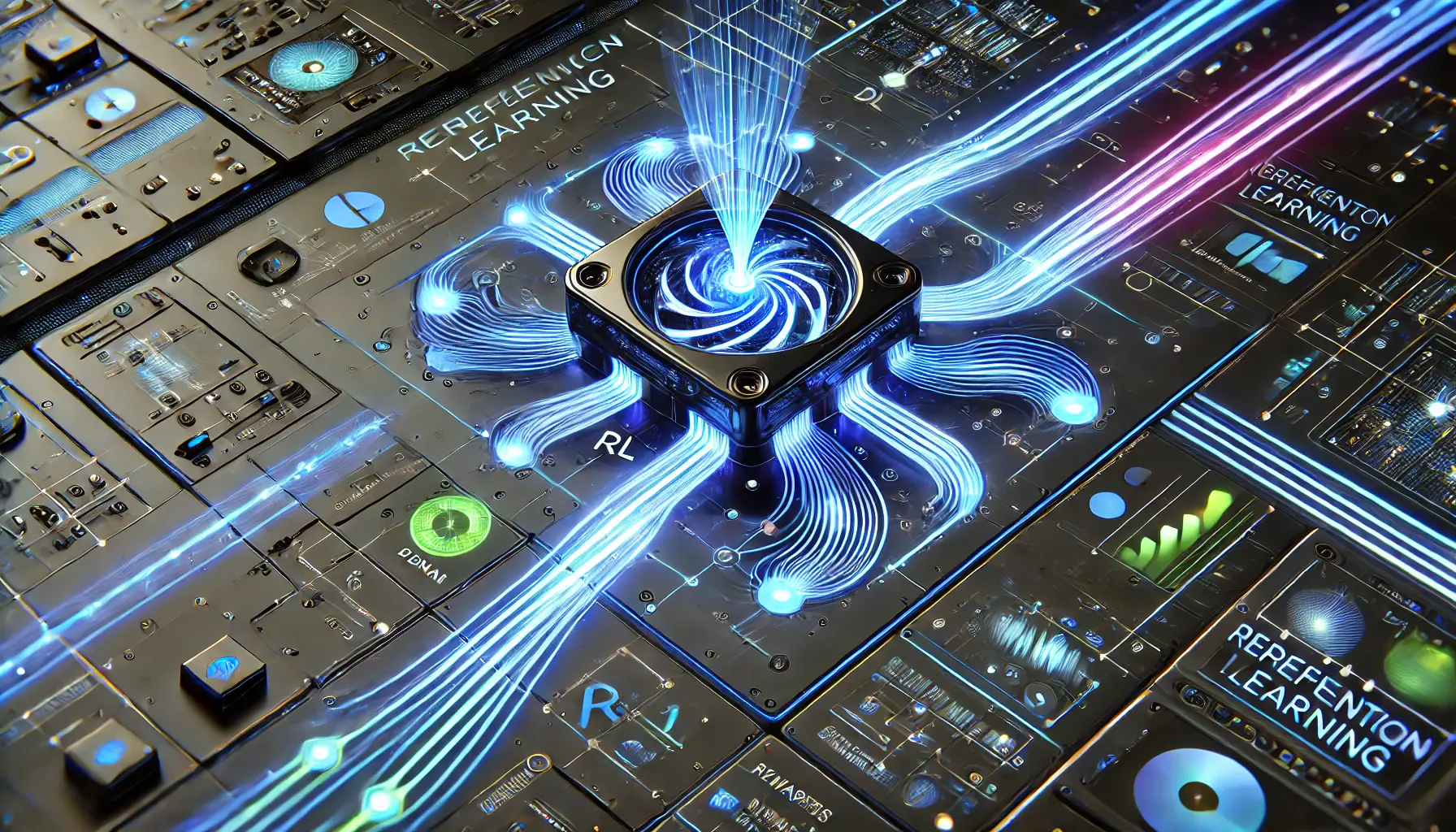
A representation of the Reinforcement Learning (RL) process in DeepSeek v3, illustrating how the AI adapts through feedback and rewards.
Reinforcement Learning (RL)
To further refine its reasoning abilities, DeepSeek v3 employs Reinforcement LearningA type of machine learning where an AI model learns by receiving rewards or penalties based on its actions. (RL).
In this phase, the model is trained to generate responses that are not only correct but also contextually appropriate by receiving feedback through reward mechanisms.
This approach significantly reduces reliance on large-scale human data labeling, allowing the model to optimize its outputs autonomously.
Together, these three training methodologies—multilingual pre-training, supervised fine-tuning, and reinforcement learning—equip DeepSeek v3 with the versatility and proficiency needed to excel in a wide range of applications, from complex problem-solving to creative endeavors.
DeepSeek v3’s training process involves multilingual pre-training, supervised fine-tuning, and reinforcement learning, ensuring high accuracy and adaptability.
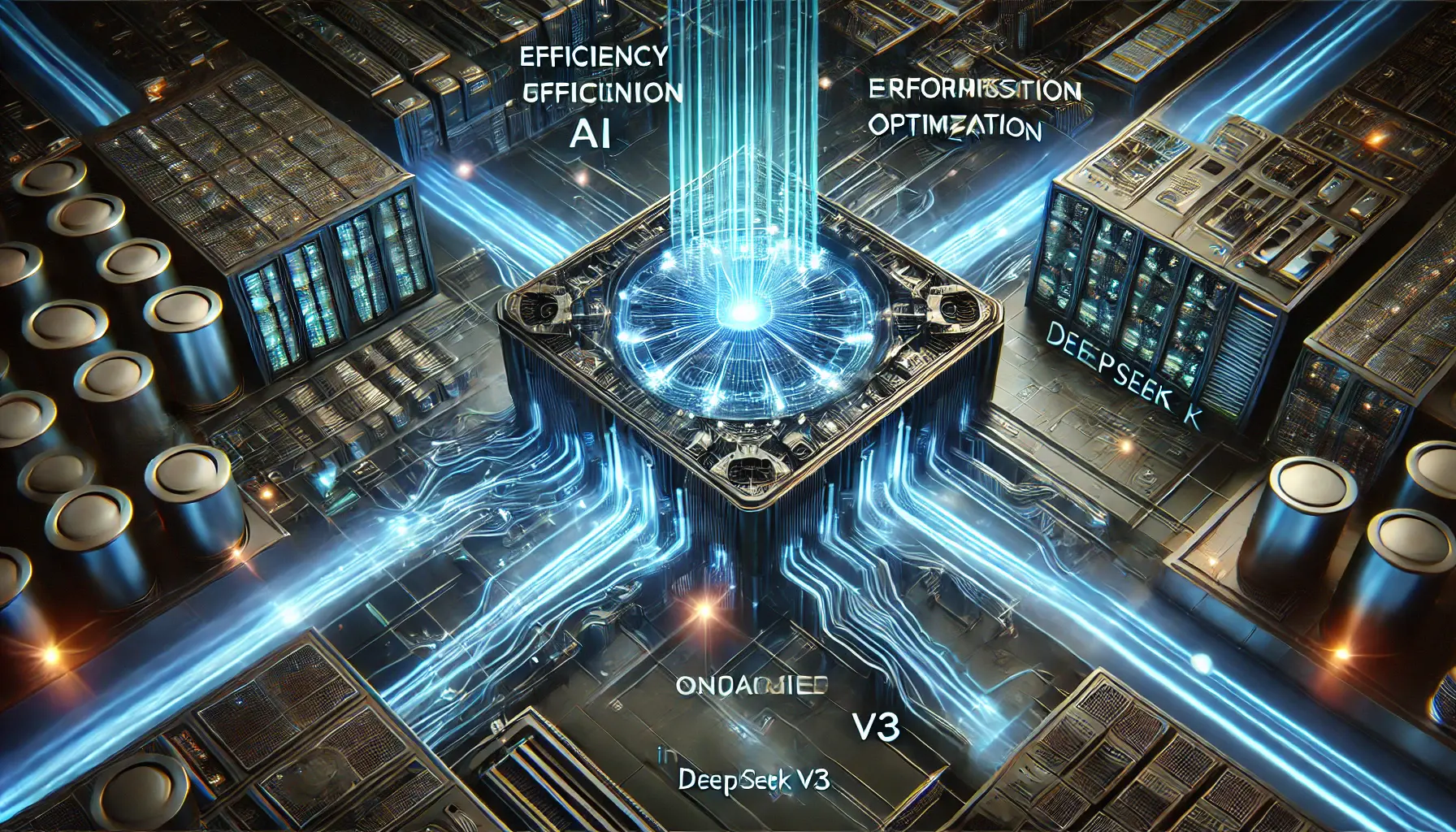
undefined
Efficiency and Performance Optimization in DeepSeek v3
In the realm of artificial intelligence, achieving high performance while maintaining efficiency is paramount.
DeepSeek v3 exemplifies this balance through several innovative strategies designed to optimize both speed and resource utilization.
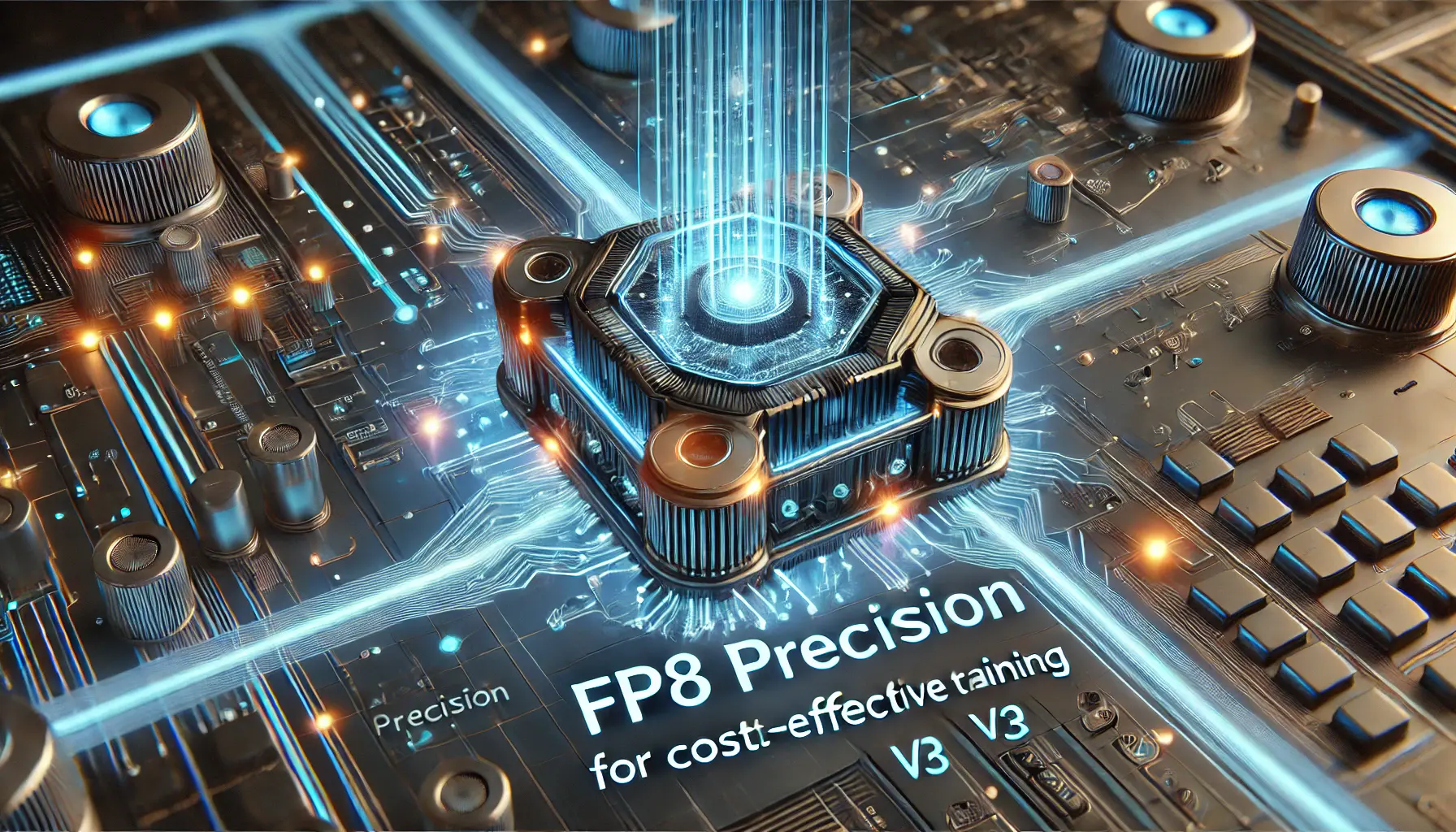
A representation of DeepSeek v3 using FP8 precision, highlighting the efficient processing of data with reduced memory consumption and lower computational costs.
FP8 Precision for Cost-Effective Training
One of the defining features of DeepSeek v3 is its adoption of FP8 precisionA floating-point format that reduces memory consumption and computational cost while maintaining accuracy. during training.
This approach significantly reduces memory consumption and computational costs without sacrificing accuracy.
By leveraging FP8 precision, the model ensures faster processing speeds while lowering energy consumption, making it both economically and environmentally efficient.
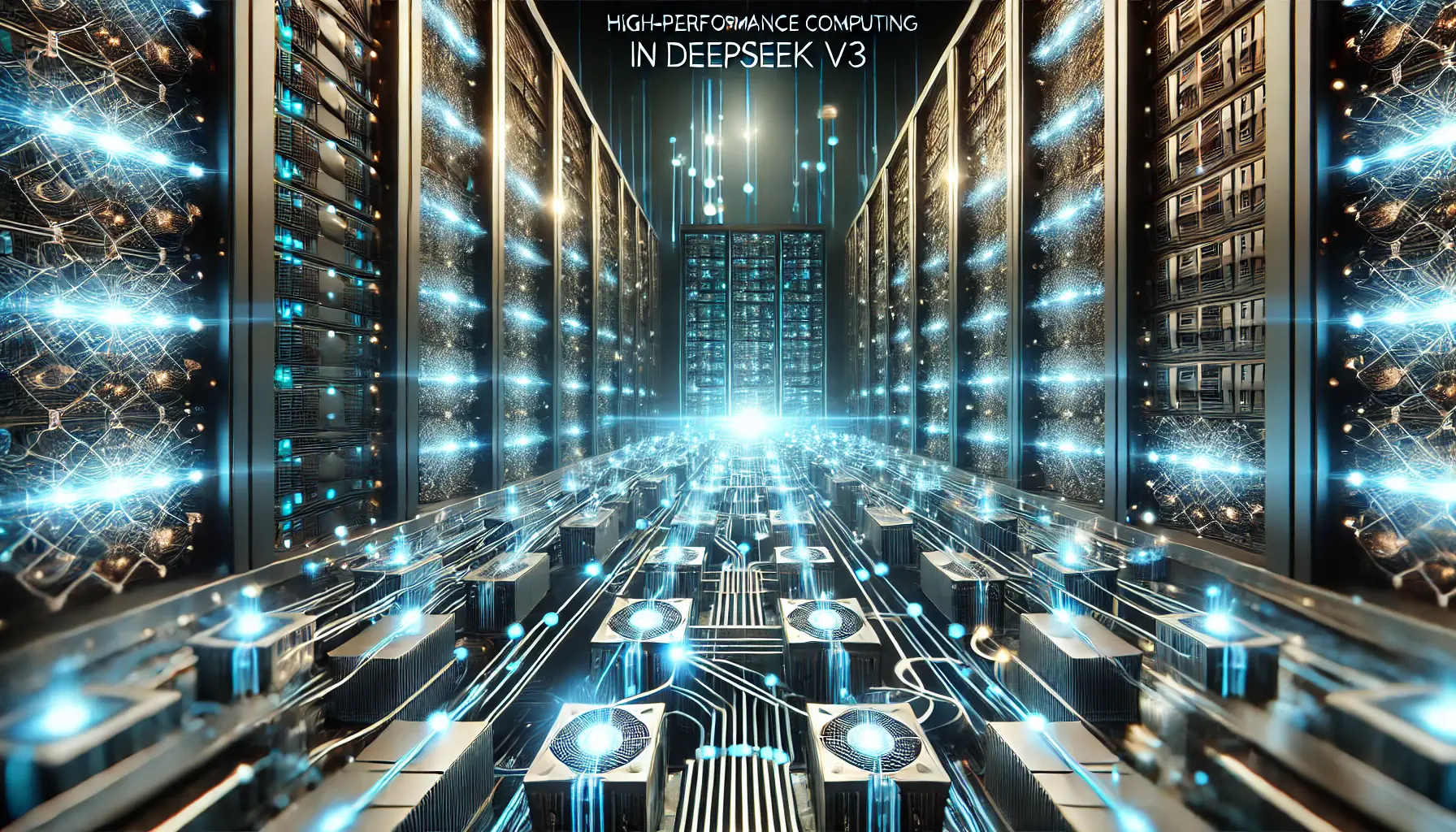
A representation of DeepSeek v3’s High-Performance Computing (HPC) Co-Design, illustrating seamless integration of hardware and software for optimized data throughput.
High-Performance Computing (HPC) Co-Design
To further enhance efficiency, DeepSeek v3 incorporates an architecture designed with High-Performance ComputingThe use of supercomputers and parallel processing techniques for solving complex computational problems. (HPC) principles.
This strategy optimizes both hardware and software components to ensure seamless operation, improving data throughput and reducing latencyThe delay before a transfer of data begins following an instruction for its transfer..
Such integration allows DeepSeek v3 to handle large-scale computations efficiently while maintaining peak performance across different tasks.
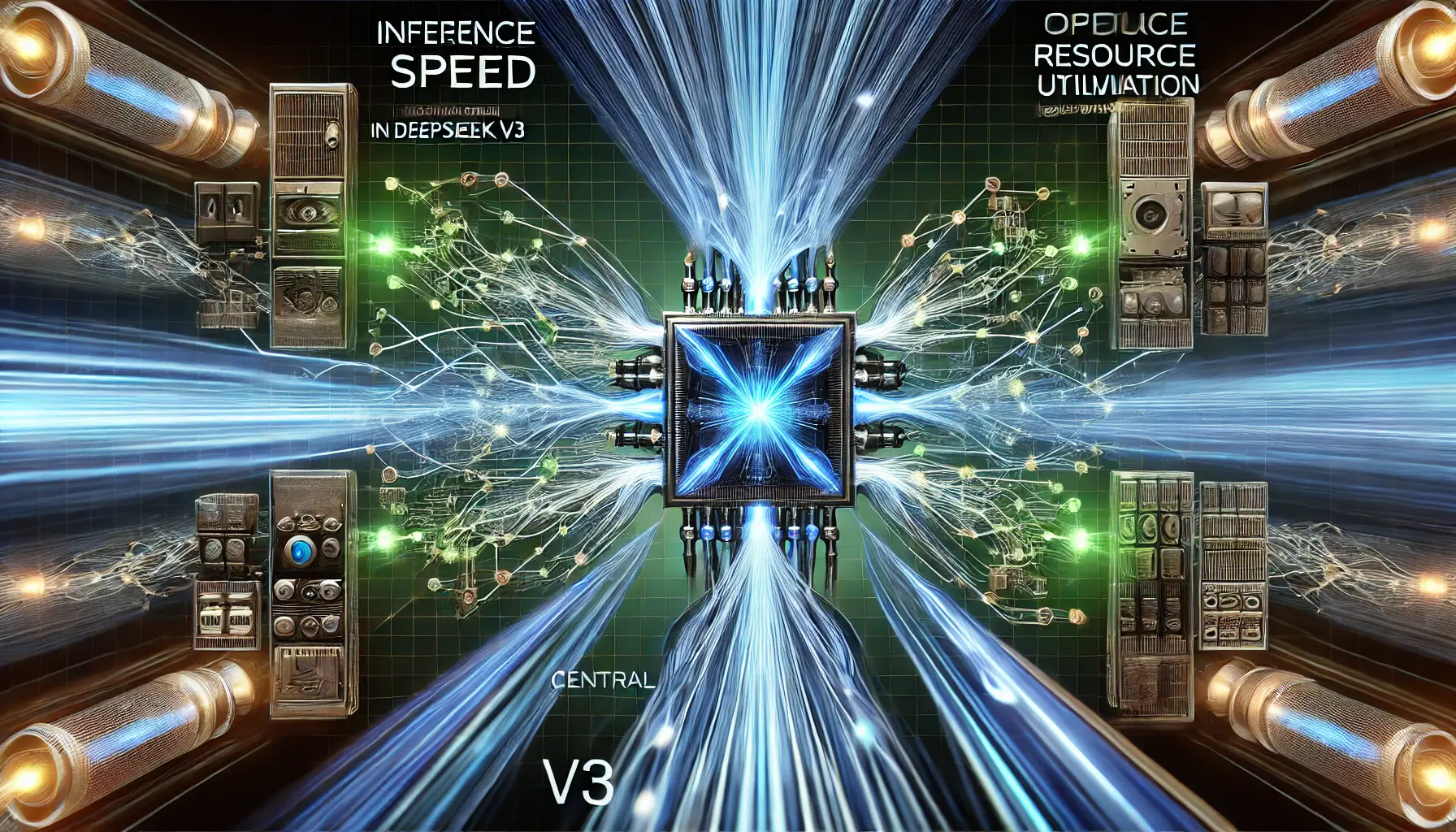
A representation of DeepSeek v3’s inference speed and resource optimization, illustrating the efficient balance between processing speed and resource usage.
Inference Speed and Resource Utilization
DeepSeek v3 is engineered to provide rapid inference while minimizing computational resource consumption.
Its architecture enables dynamic resource allocation, ensuring that processing power is directed where it is most needed.
This adaptive resource management not only accelerates inference speeds but also significantly enhances the scalability and adaptability of the model across diverse applications.
Collectively, these innovations allow DeepSeek v3 to achieve a remarkable balance between performance and efficiency, setting a new benchmark for cutting-edge AI models.
Utilizing FP8 precision, DeepSeek v3 achieves lower memory consumption and computational cost without sacrificing performance.

A representation of the comparative analysis and future directions of DeepSeek v3, illustrating the comparison between AI models and the growth of future technological advancements.
Comparative Analysis and Future Directions of DeepSeek v3
As we explore the landscape of artificial intelligence, it’s essential to understand how DeepSeek v3 compares to other leading AI models and what the future holds for this innovative technology.
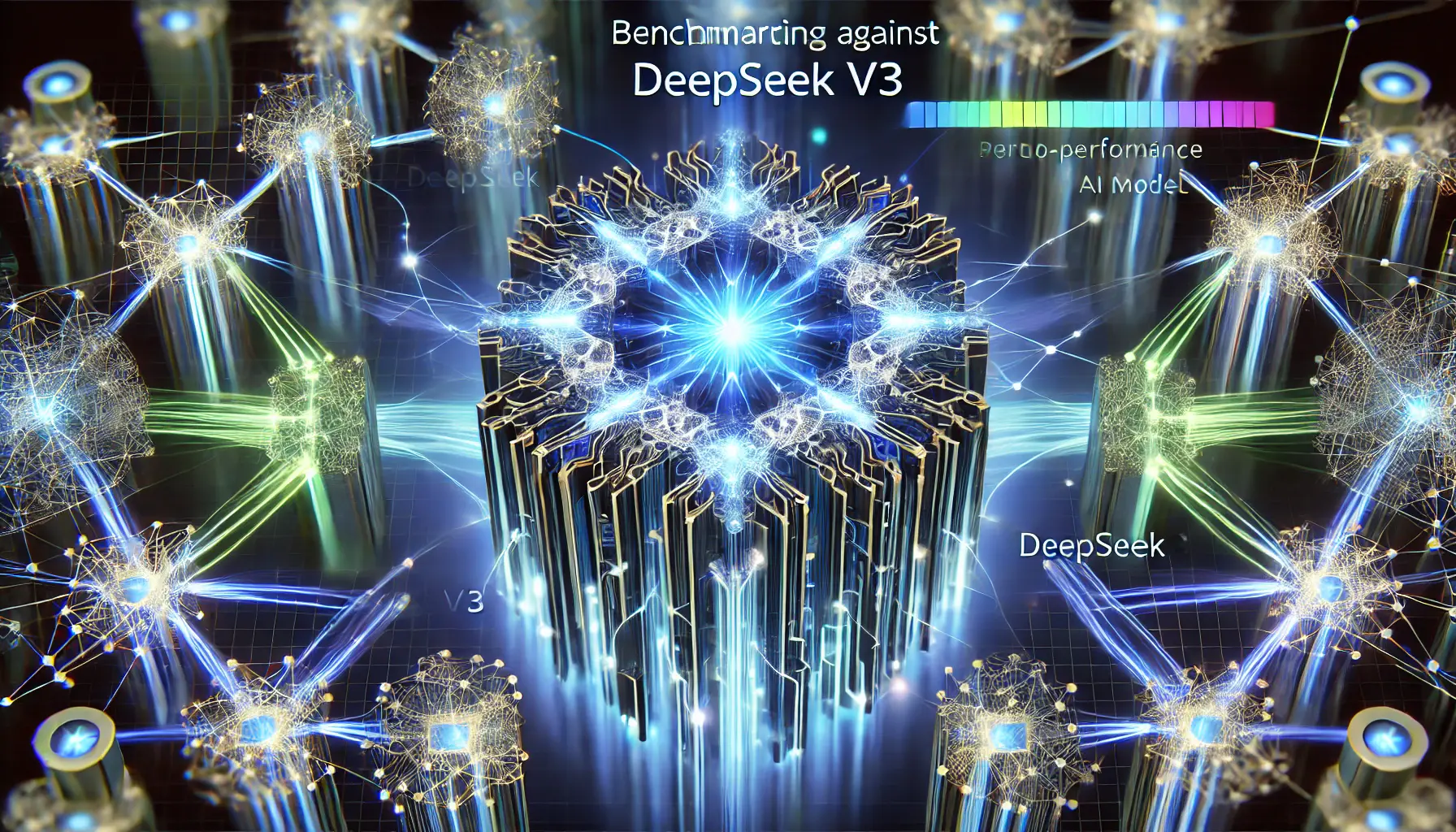
A representation of DeepSeek v3 in a benchmarking scenario, highlighting its superior performance compared to other AI models with energy flows indicating faster processing.
Benchmarking Against Other AI Models
DeepSeek v3 has demonstrated outstanding performance in recent evaluations, particularly in coding, mathematics, and multilingual tasks.
It has outperformed other open-source large language models (LLMs) of the same scale, such as Llama 3.1 and Qwen 2.5, and has matched the capabilities of proprietary models like GPT-4o and Claude 3.5 Sonnet.
This positioning underscores DeepSeek v3’s excellence in the AI field.
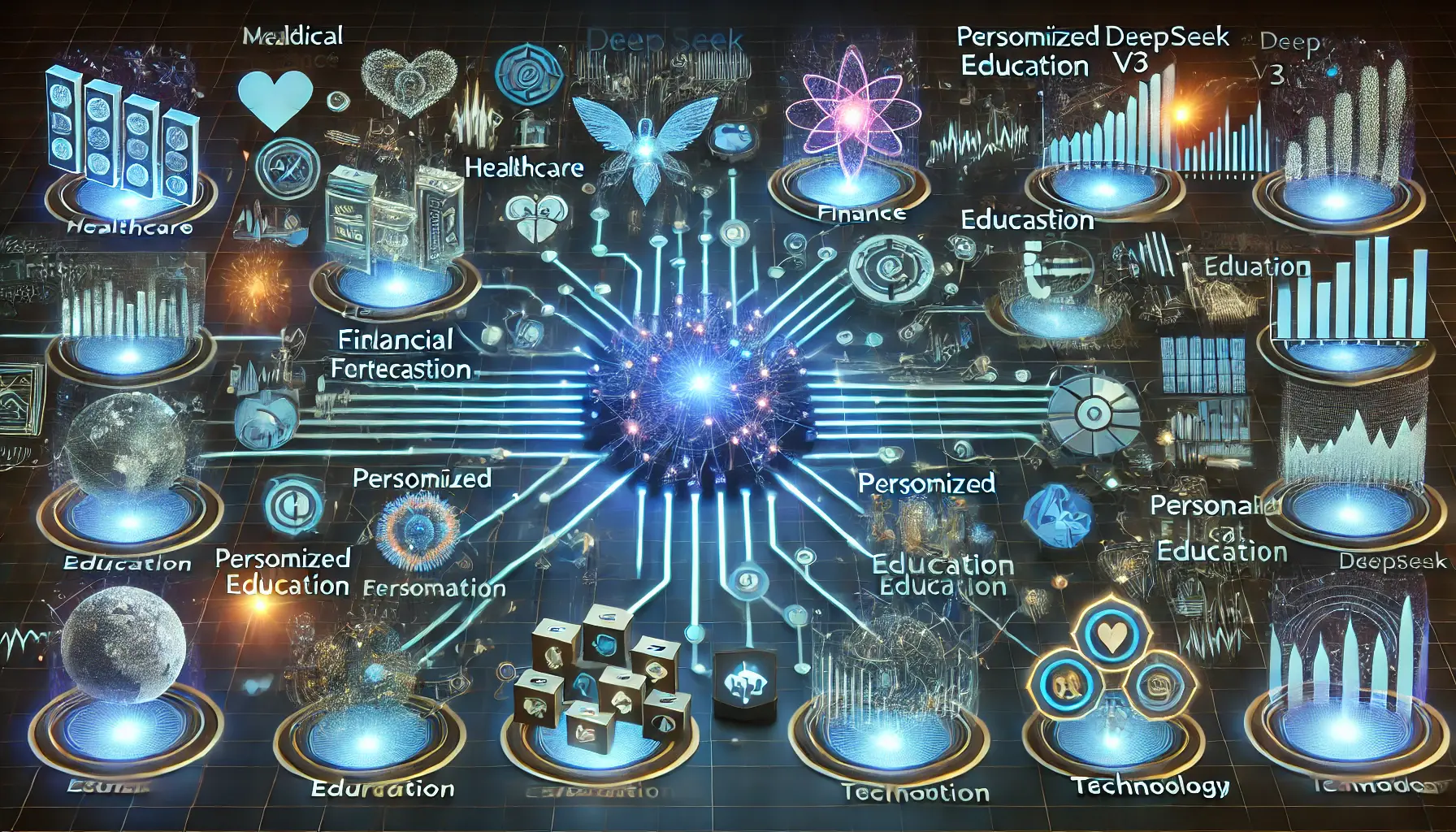
A representation of DeepSeek v3’s diverse use cases, highlighting its applications across industries such as healthcare, finance, education, and technology.
Possible Use Cases for DeepSeek v3
The versatility of DeepSeek v3 enables a wide range of applications across multiple industries:
- Healthcare: Supporting medical research by analyzing vast datasets to identify patterns and potential treatments.
- Finance: Enhancing predictive models for market trends, assessing risks associated with investments, and optimizing financial strategies.
- Education: Providing personalized learning experiences through intelligent tutoring systems and virtual teaching assistants.
- Technology: Streamlining software development with enhanced code generation and offering debugging assistance.
These applications further highlight DeepSeek v3’s flexibility and its potential impact across industries.
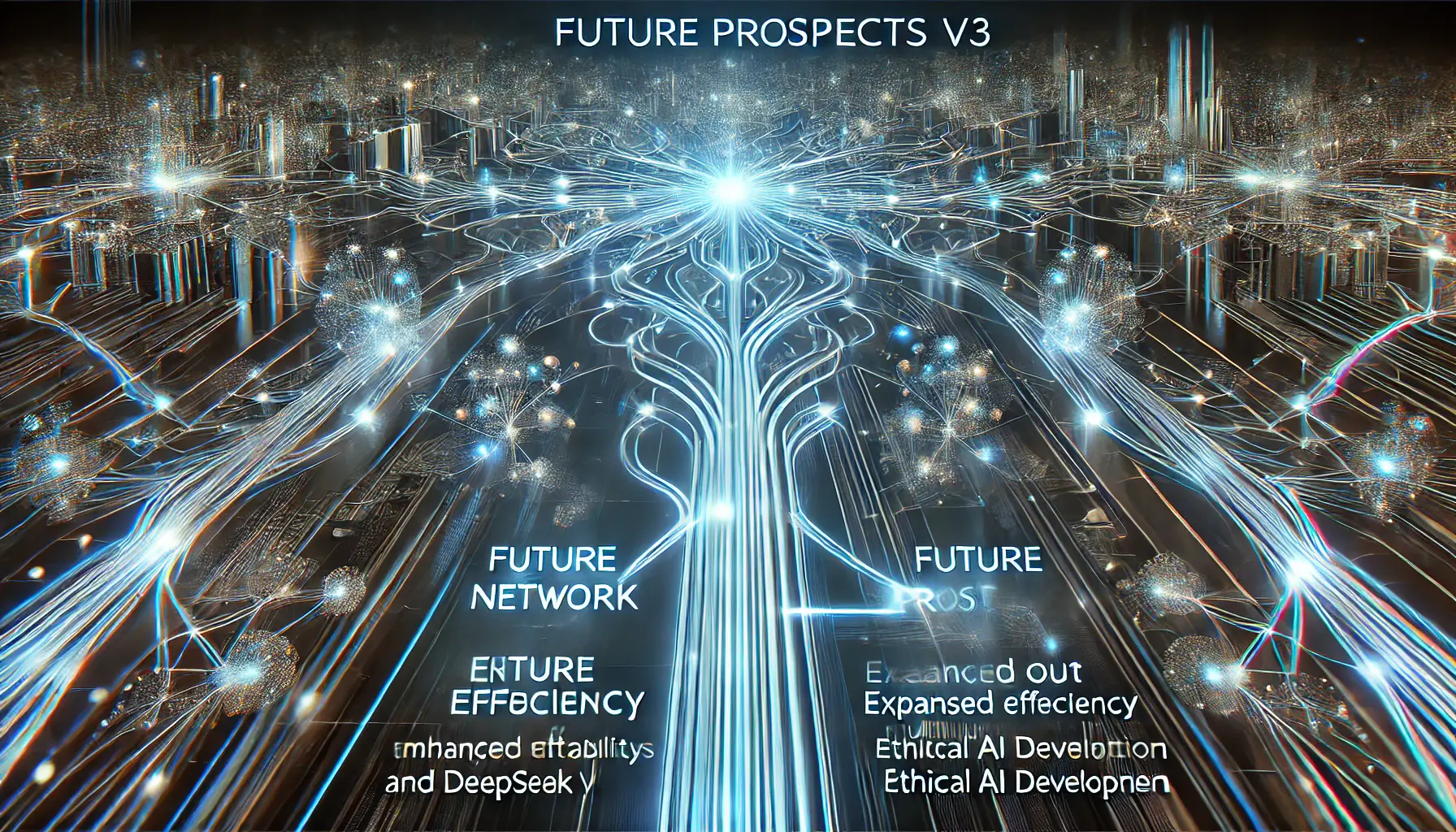
A representation of the future research directions for DeepSeek v3, illustrating the expansion of AI capabilities in areas such as efficiency, multilingual support, and ethical development.
Future Prospects and Research Directions
Looking ahead, several key areas will be the focus of DeepSeek v3’s development:
- Enhanced Efficiency: Further reducing computational costs and energy consumption through optimized algorithms and advanced hardware integration.
- Expanded Multilingual Support: Increasing the model’s proficiency in additional languages to cater to a more diverse global audience.
- Ethical AI Development: Implementing robust frameworks for responsible AI usage and minimizing biases in AI-generated content.
- Real-World Integration: Collaborating with industries to fine-tune the model’s capabilities for specific practical applications, ensuring seamless adoption and maximum impact.
By focusing on these research areas, DeepSeek v3 aims to stay at the forefront of AI advancements, continuously evolving to meet society’s dynamic demands.
DeepSeek v3 is not only a testament to the rapid progress in AI technology but also a driving force for future innovations.
Its competitive strengths and forward-looking development strategies emphasize its pivotal role in shaping the future of artificial intelligence.
DeepSeek v3 has outperformed open-source models and competes with proprietary AI, paving the way for further research and real-world integration.

A representation of the culmination of DeepSeek v3’s architectural advancements, with interconnected neural network components coming together in harmony.
Final Thoughts on the Technical Architecture of DeepSeek v3
DeepSeek v3 has emerged as a groundbreaking advancement in artificial intelligence, integrating state-of-the-art methodologies to enhance efficiency, performance, and adaptability.
By leveraging cutting-edge innovations such as the Mixture-of-Experts (MoE) framework, Multi-Head Latent Attention (MLA), and an auxiliary-loss-free load balancing strategy, this model stands out as a powerful tool for various AI-driven applications.
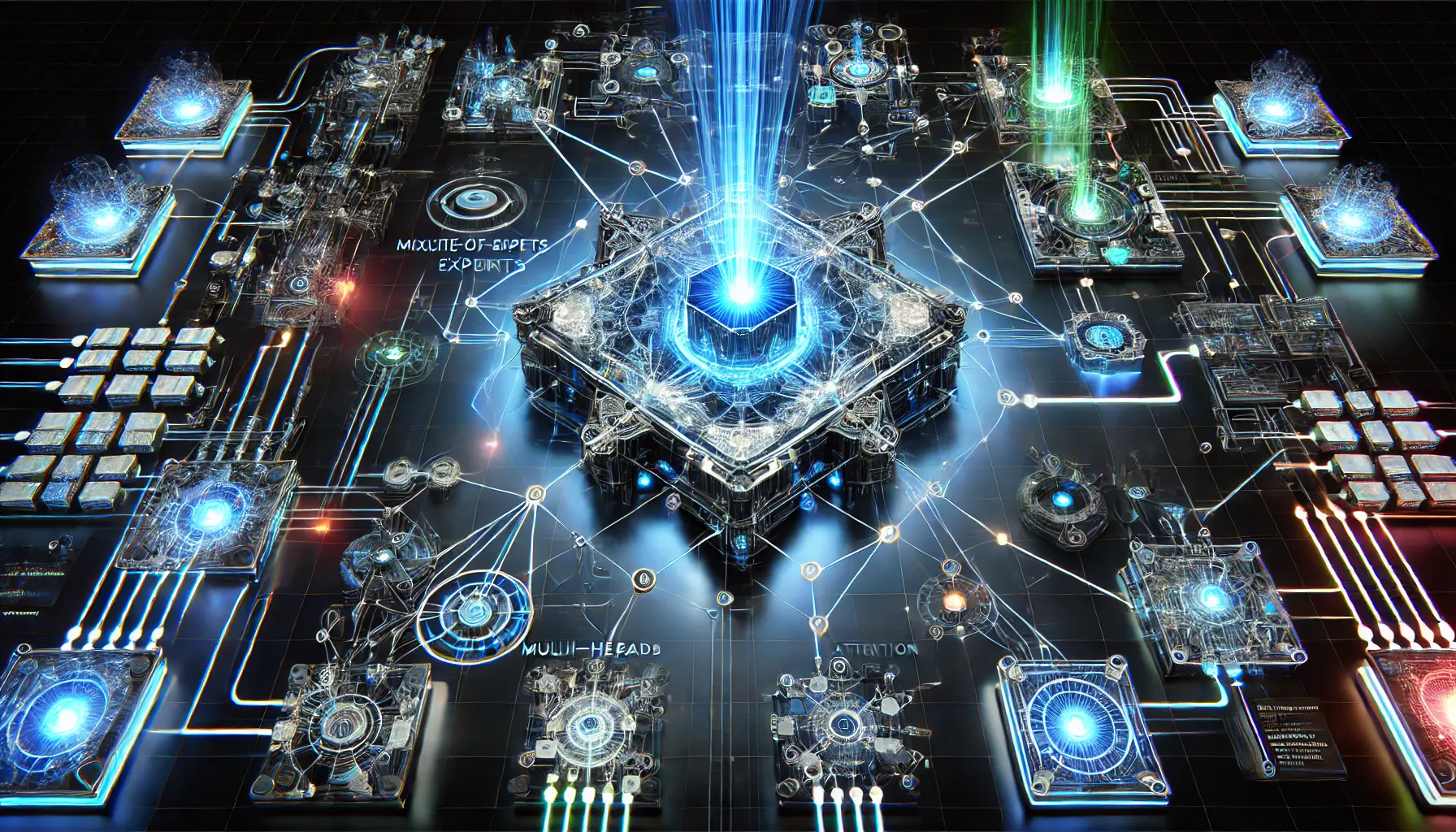
A representation of DeepSeek v3’s architecture, highlighting its core components and the optimization of performance through interconnected neural network features.
Key Takeaways from DeepSeek v3’s Architecture
Throughout this article, we have explored what makes DeepSeek v3 unique.
Here are the major takeaways from our discussion:
- Scalable Architecture: The MoE framework enables dynamic computation assignment, improving multitasking capabilities.
- Optimized Training: Extensive pre-training, supervised fine-tuning, and reinforcement learning enhance the model’s accuracy and adaptability.
- Performance Efficiency: The adoption of FP8 precision and high-performance computing (HPC) principles significantly reduces memory consumption and computational costs.
- Real-World Applications: DeepSeek v3 has demonstrated versatility across industries, including healthcare, finance, education, and technology.
- Innovation: Multilingual expansion, ethical AI development, and industry-specific integration position DeepSeek v3 as a frontrunner in AI research.

A representation of DeepSeek v3’s impact on AI development, with its central network influencing other interconnected AI systems through advanced energy flows.
The Impact of DeepSeek v3 on AI Development
DeepSeek v3 has set a new benchmark in AI development by refining its underlying architecture and optimizing computational efficiency.
Its ability to dynamically allocate resources, accelerate inference speeds, and maintain high accuracy makes it an indispensable tool for technological advancements.
Additionally, its strategic enhancements over previous versions highlight a strong commitment to continuous innovation.
As artificial intelligence evolves, DeepSeek v3 is expected to play a crucial role in shaping the next wave of AI-driven solutions.
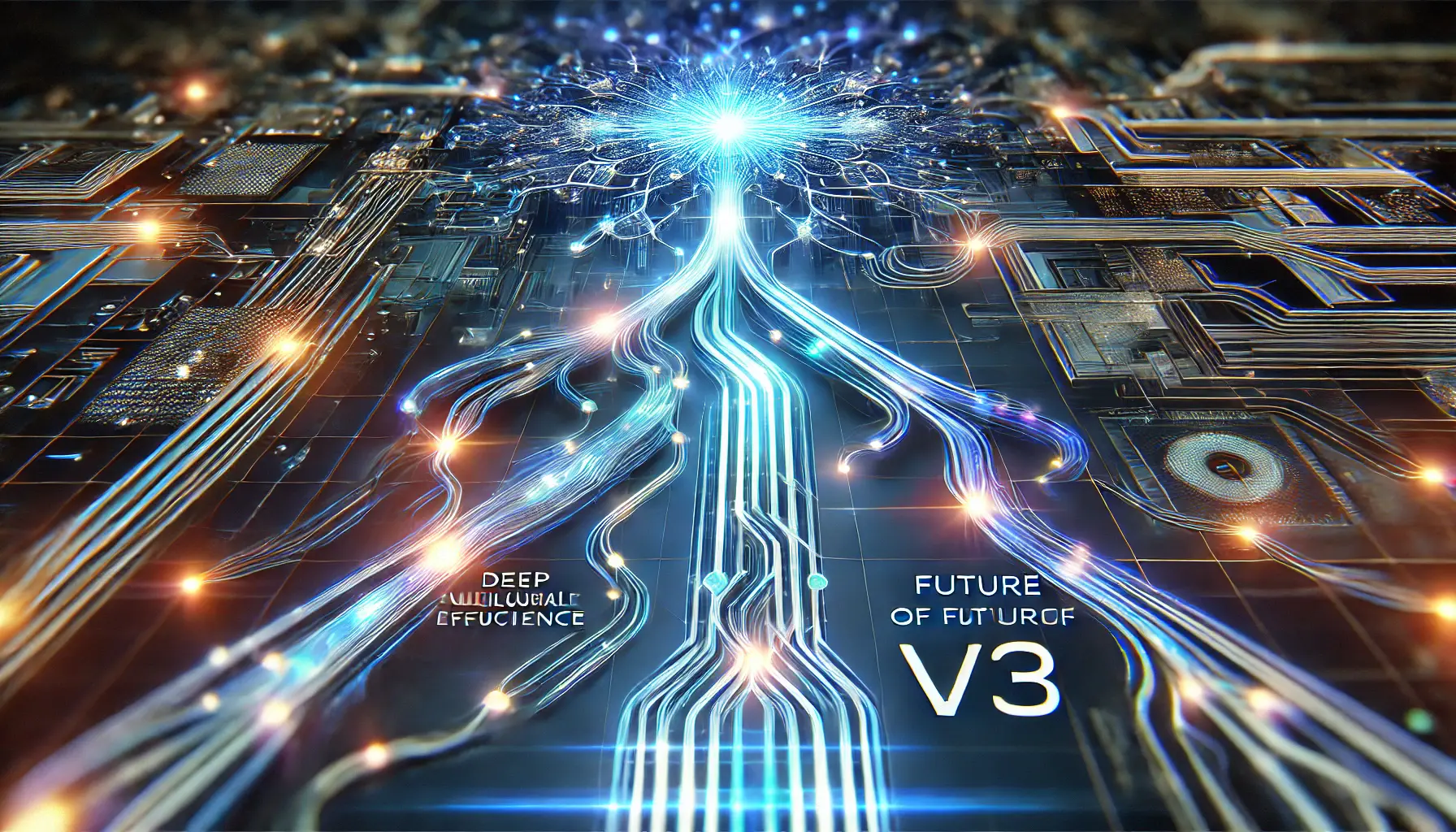
A representation of the future evolution of DeepSeek v3, illustrating the expansion of its capabilities and advancements in technology.
Looking to the Future: What’s Next for DeepSeek v3?
As ongoing research continues to refine DeepSeek v3, several key advancements are anticipated:
- Higher Computational Efficiency: Further reductions in energy consumption through improved model training techniques.
- Expanded Multilingual Capabilities: Increased language support to cater to a more diverse global audience.
- Industry-Specific Applications: Enhanced AI integrations tailored for healthcare, finance, education, and other sectors.
- Stronger Ethical AI Measures: Improved bias-mitigation frameworks to ensure responsible and fair AI deployment.
By embracing these advancements, DeepSeek v3 is set to further solidify its place in the AI landscape, providing more precise and intelligent solutions to meet the evolving digital challenges of the modern world.

A representation of the culmination of DeepSeek v3’s development, with a mature neural network and a strong central processing hub.
Conclusion
DeepSeek v3 marks a new era of transformation in artificial intelligence.
Its efficiency, scalability, and adaptability position it as a key player in the ever-evolving AI industry.
As it continues to drive innovation, DeepSeek v3 is redefining the boundaries of machine learning and setting new standards for AI-driven advancements.
DeepSeek v3 sets a new standard in AI development, offering efficiency, scalability, and adaptability for a wide range of applications.
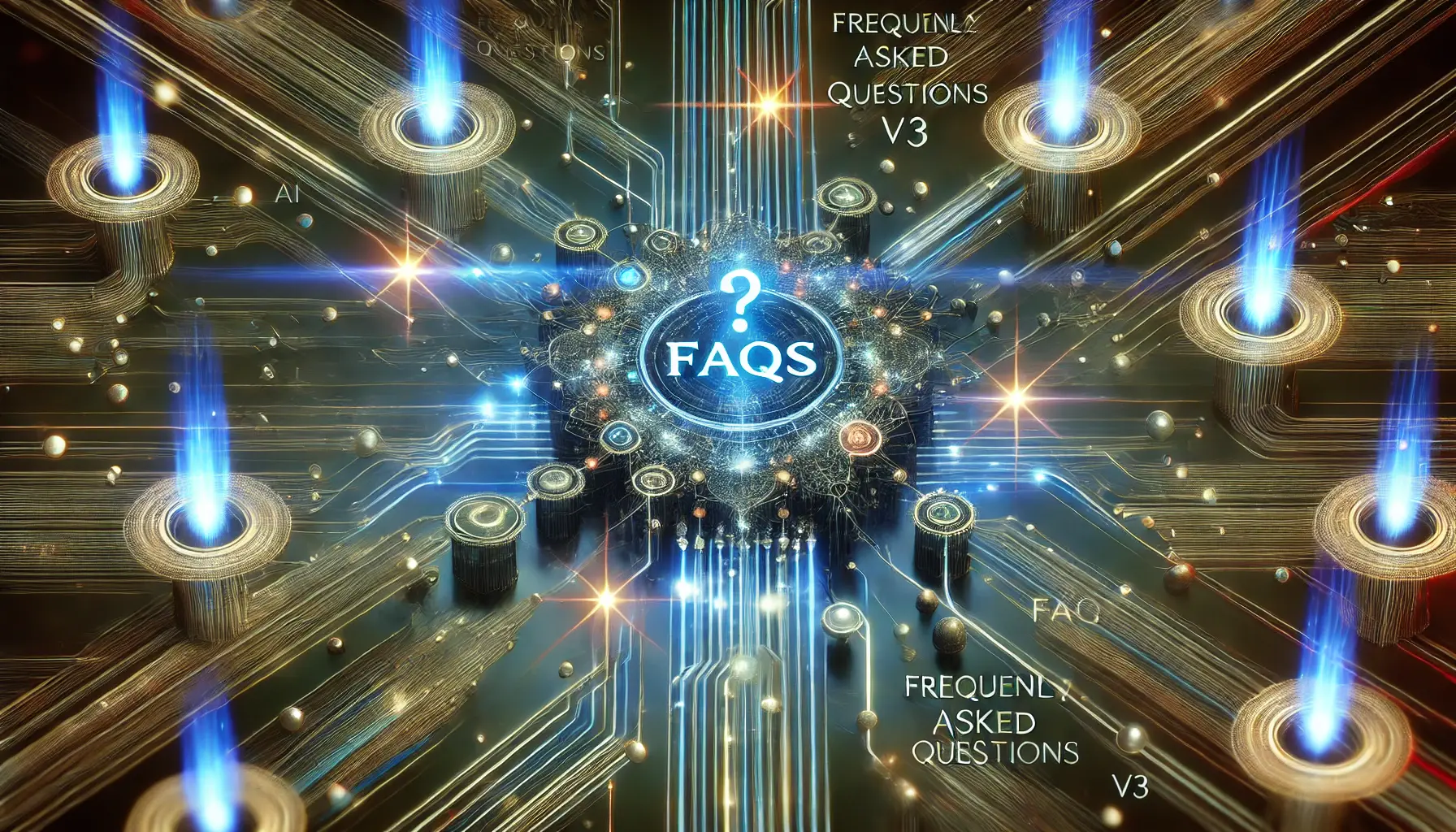
A representation of DeepSeek v3’s dynamic process of querying and answering frequently asked questions through intelligent AI interaction.
DeepSeek v3: Frequently Asked Questions
As we conclude our exploration of DeepSeek v3’s technical architecture, here are some frequently asked questions to further clarify its features and capabilities.
DeepSeek v3 introduces the Mixture-of-Experts framework and Multi-Head Latent Attention, enhancing multitasking and computational efficiency.
This framework divides the neural network into specialized sub-networks, allowing dynamic computation allocation and improved multitasking.
It is a mechanism that refines attention processes using compressed latent vectors, reducing memory consumption without performance degradation.
An auxiliary-loss-free strategy dynamically adjusts bias to avoid computational bottlenecks and ensure good scalability.
DeepSeek v3 undergoes large-scale pre-training on a multilingual corpus, followed by supervised fine-tuning and reinforcement learning.
FP8 precision reduces memory and computation costs without compromising accuracy, leading to faster processing and lower energy consumption.
DeepSeek v3 is versatile, with applications in healthcare, finance, education, and technology, among others.
It outperforms open-source models like Llama 3.1 and Qwen 2.5, matching proprietary models such as GPT-4o and Claude 3.5 Sonnet.




